Vasovasostomy anastomosis
Vasectomy reversal completed
Vasectomy reversal suturing
Vasectomy reversal preparation
Vasectomy reversal incision
Reversal of vasectomy
Following vasectomy reversal surgery, a patient may resume light duties 2-3 days after the procedure. No intercourse or ejaculation is allowed for at least 4 weeks. Semen analysis can be done at 1, 3 and 6 months after surgery to determine success.
Patients should be advised to attempt conception as soon as there is sperm in the ejaculate. Late obstruction, after initial patency, may occur in 12% of men in as early as 1 year after surgery. It is usually preceded by signs of progressive loss of motility followed by density decline.
Vasectomy reversal is a technically challenging surgery which yields fairly good results for a procedure which is considered ‘irreversible’. Success rate is dependent on various factors including the time interval since vasectomy. In addition, the experience of the urologist is a very important determinant.
Updated 8 Nov 09








Urology Services



Vasectomy Reversal
Vasectomy reversal surgery is done under general anesthesia as a day surgery procedure. The entire procedure is performed using microsurgical techniques and a high power operative microscope. Surgery may take between 2 – 4 hours. An incision is made in the scrotum; testes and both vas ends are identified and exposed. The two ends of the vas are brought together with at least two layers of very fine sutures to ensure a leak-proof joint.
Continuity of vas restored by
stitching ends of the vas together
Fluid from cut ends of the vas is inspected under a microscope during surgery, looking for the presence of sperm. Success rate of vasectomy reversal surgery is much higher if sperm is seen. If sperm is not seen initially, a cut is made further down the vas to inspect a fresh area. If sperm is still not seen, vasoepididymostomy surgery will be done. Vaso epididymostomy involves reattaching one end of the vas to the epididymis, which is located closer to the testis. It is a finer structure than the vas and requires greater surgical effort.
Restoration of continuity of both left and right vas is attempted during surgery. Sperm can also be harvested directly from the testes at the time of surgery for sperm banking. This is usually done if sperm is not seen during surgery from the fluid within the cut ends of the vas. Banked sperm is frozen and preserved. It can be used for artificial insemination (IVF, ICSI, test tube baby) should it be necessary in the future if vasectomy reversal surgery is not successful.
The scrotal wound is repaired at the end of surgery. Stitches over the scrotum are self dissolving and do not require removal. Return to work is expected within 2-3 days.
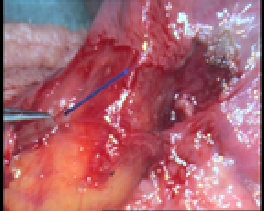
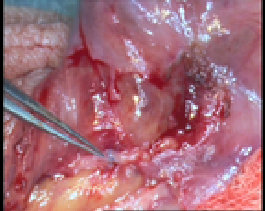
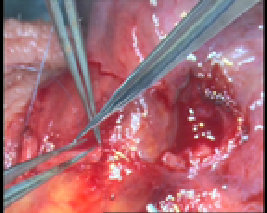
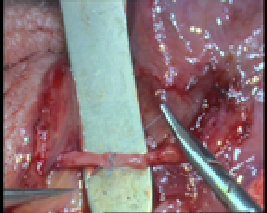
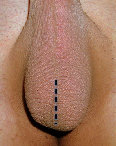
Ends of vas prepared, patency confirmed by passage of thich suture through the lumen
Ends of vas (testis end on left and penis end on right) brought together
Multiple fine stitches under microscope to create a tight joint line
A rejoined vas at the end of the procedure



Incision on scrotum to expose vas and testis on both sides



Vasectomy Reversal



The success rate is dependent on the status of the testis. A small and soft testis coupled with elevated FSH hormone levels predicts
impaired sperm production and a poorer prognosis.
A swollen epididymis suggests secondary epididymal obstruction, necessitating vasoepididymostomy,
a technically more demanding procedure. A sperm granuloma palpable at the testicular end of the vas means sperm have been leaking
at the vasectomy site. This vents the high pressures away from the epidiymis and probably improves the prognosis for restoration of
fertility after vasectomy reversal surgery.
The time interval since vasectomy greatly impacts the success of reversal. Sperm
return is above 95% and pregnancy rate is about 75% if vasectomy reversal surgery is done within 3 years after vasectomy. However,
the sperm return rates drop to below 80% and pregnancy rates to below 45% if vasectomy reversal is done after more than 10 years from
vasectomy.


Although men should consider vasectomy as irreversible, surveys suggest that between 2%-6% of vasectomised men will ultimately seek
reversal. Vasectomy reversal is achieved with microsurgical surgery, rejoining the divided vas deferens When sperm is found
in the vasal fluid on at least one side at the time of surgery, success rate of reversal is 90% with sperm being eventually found
in the ejaculate. This will translate to a pregnancy rate of 50%-70%.

S H HO UROLOGY AND LAPAROSCOPY CENTRE





























